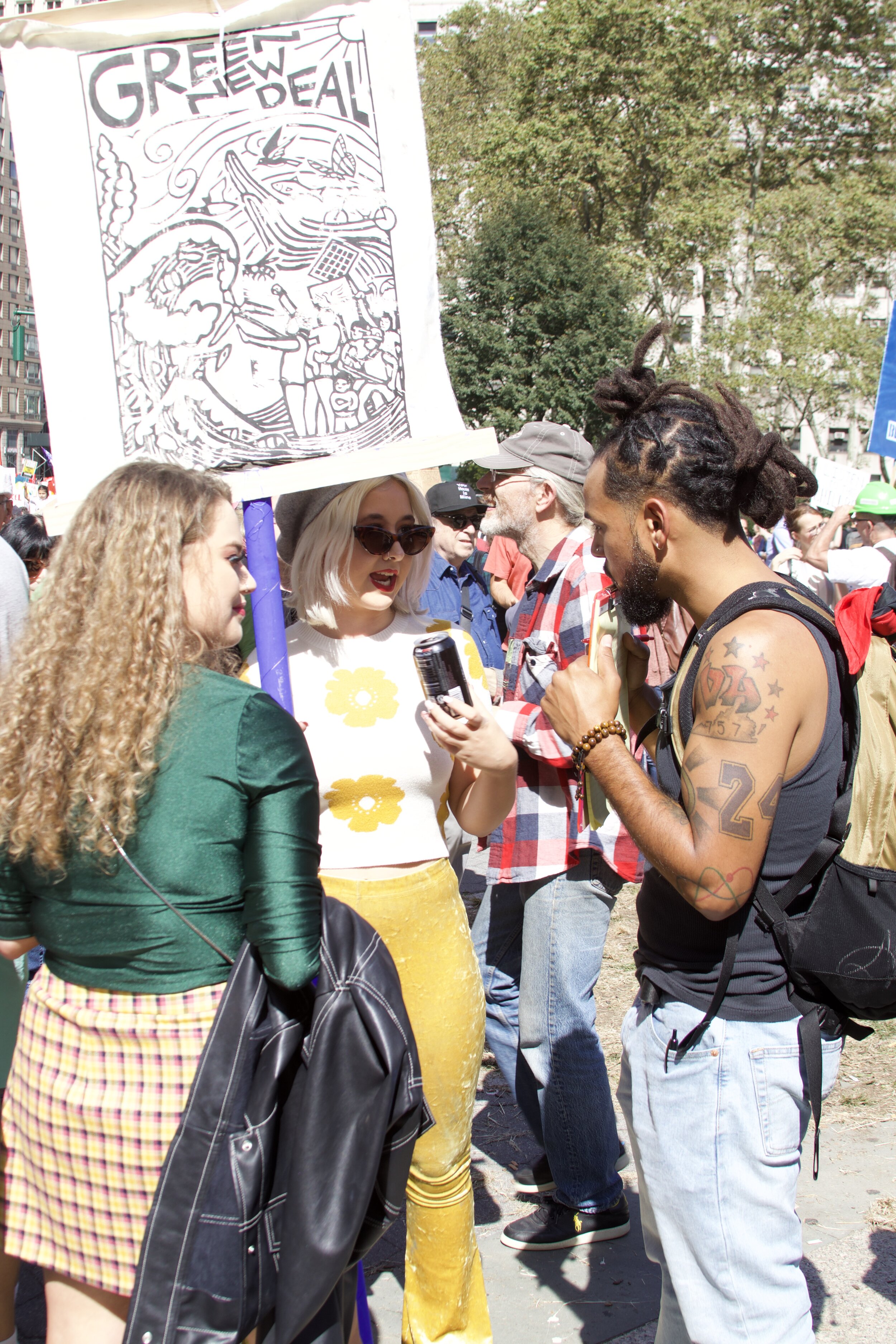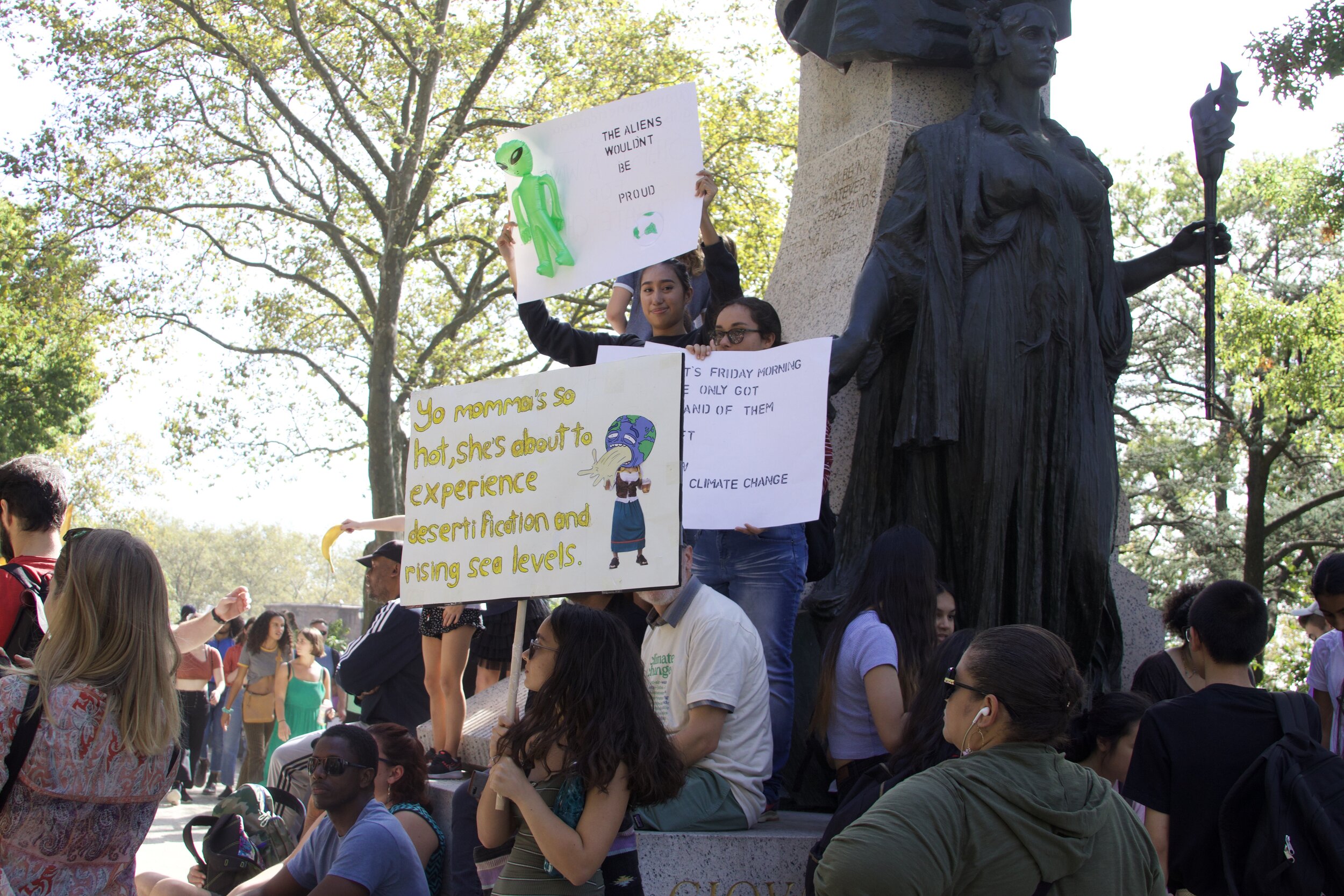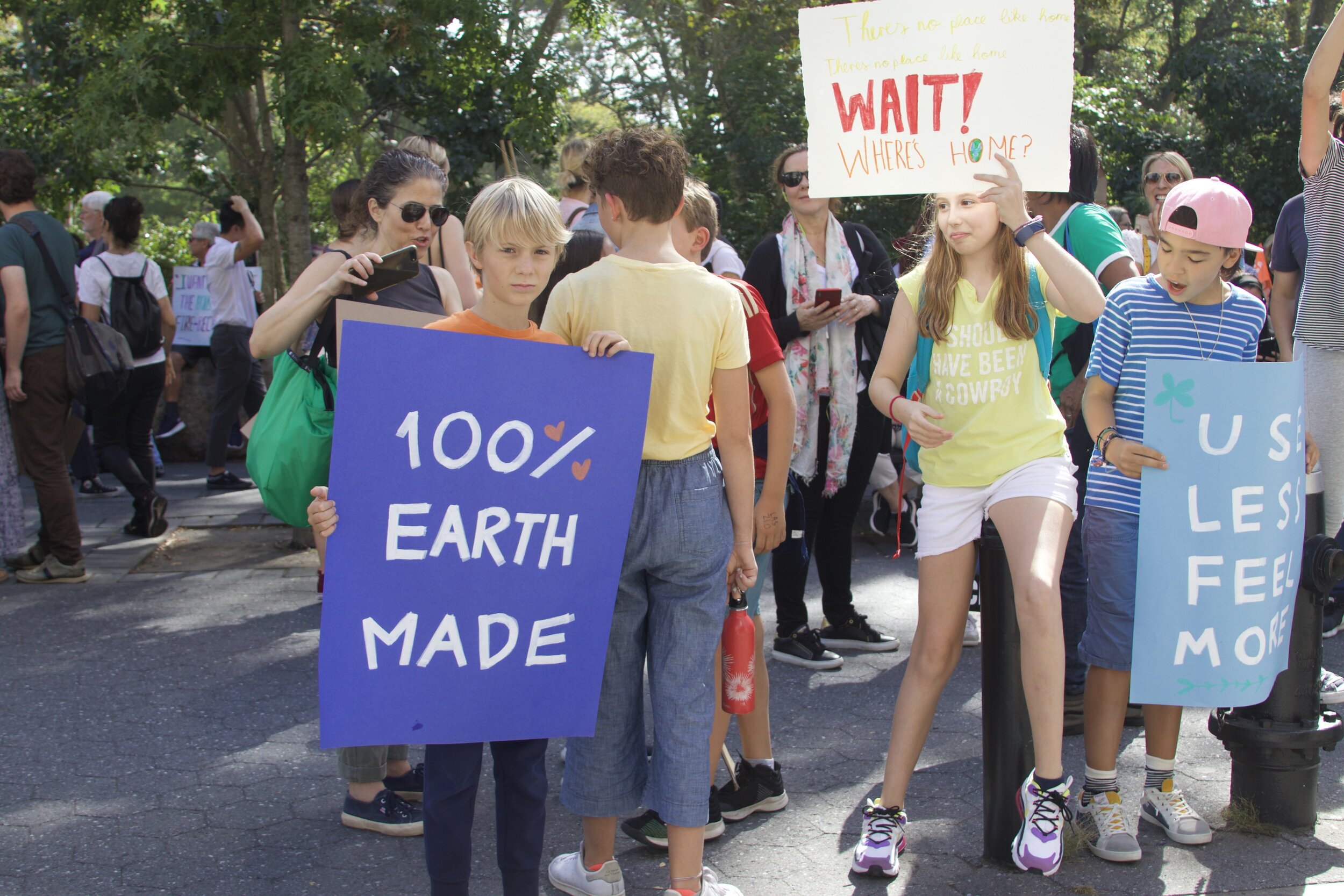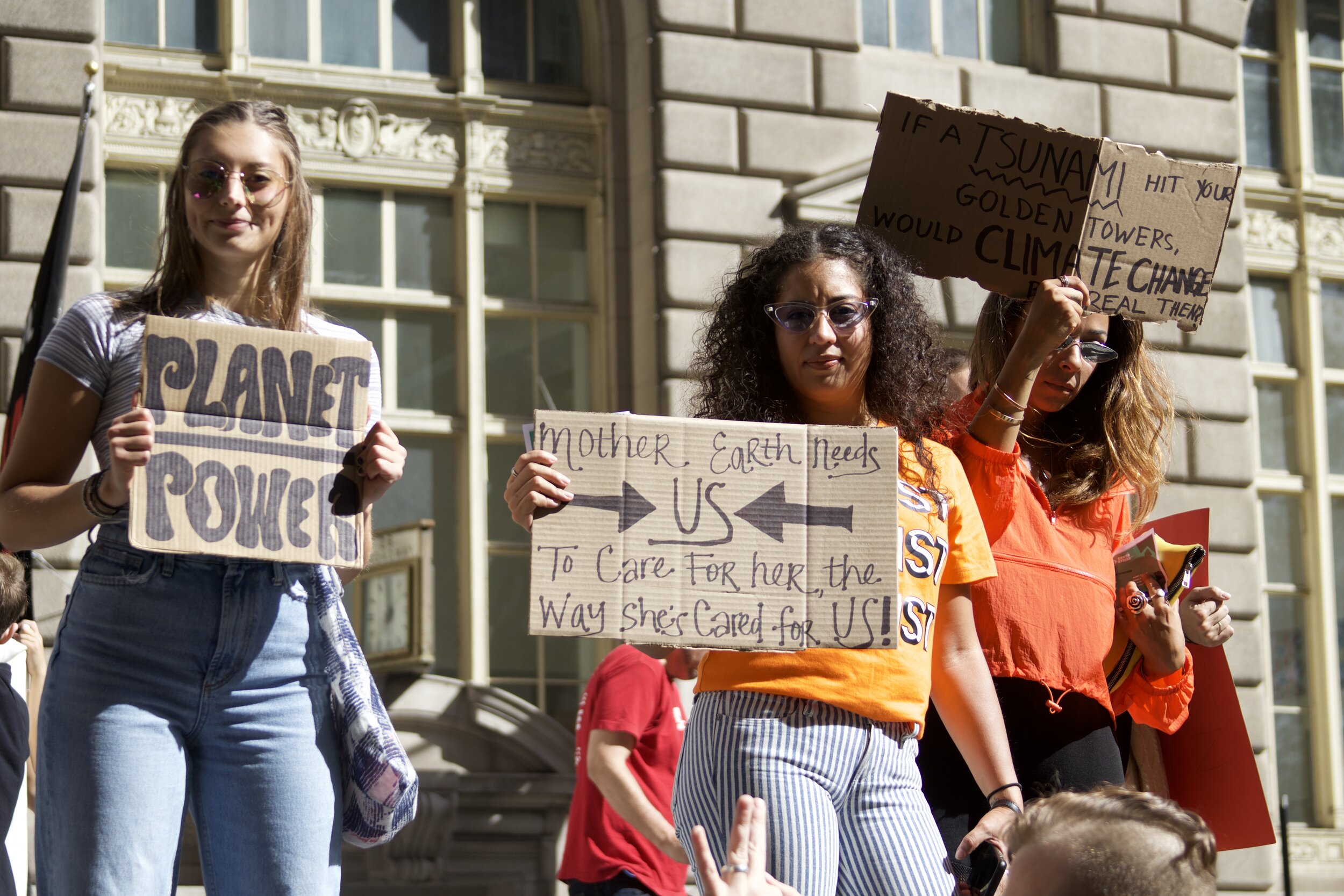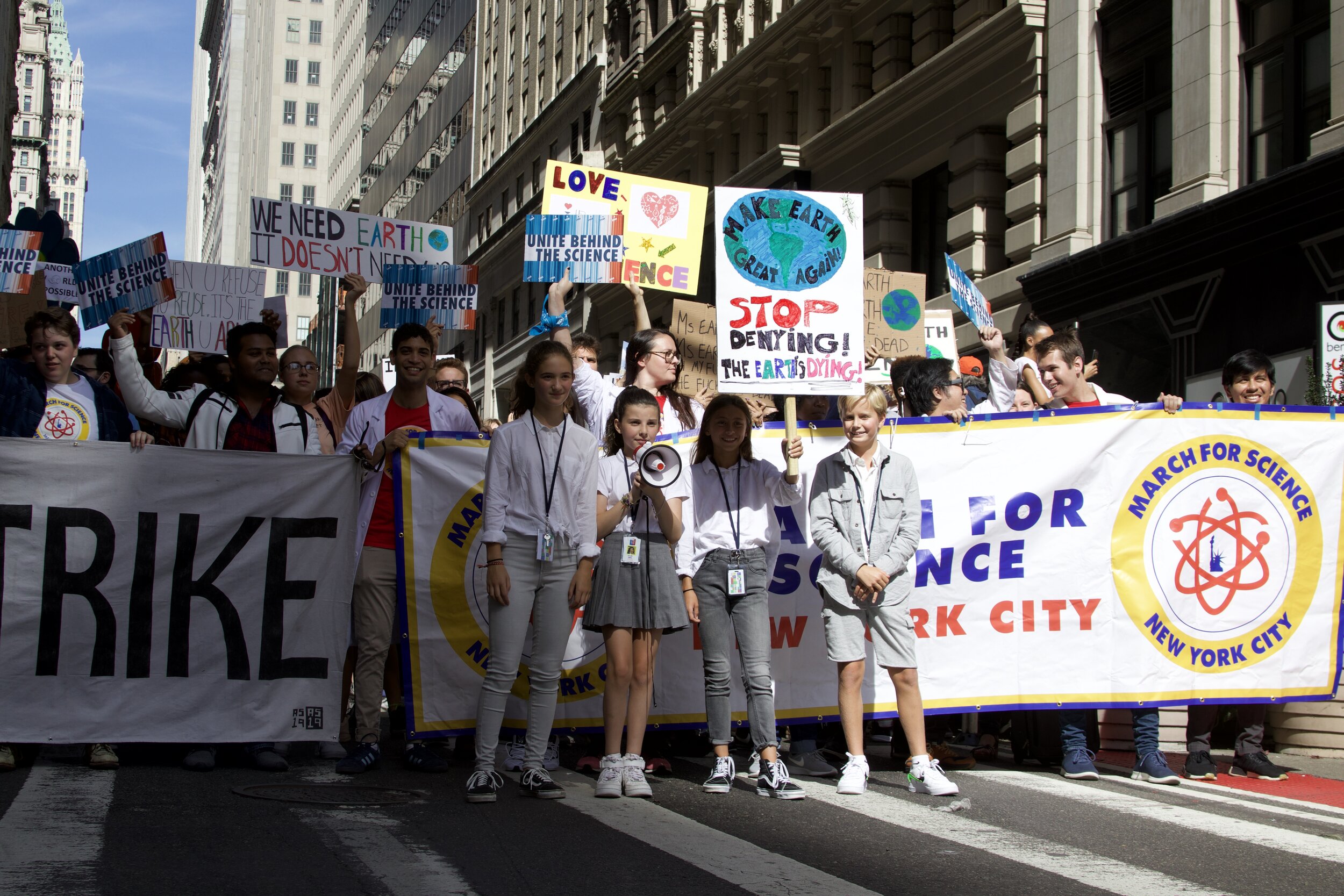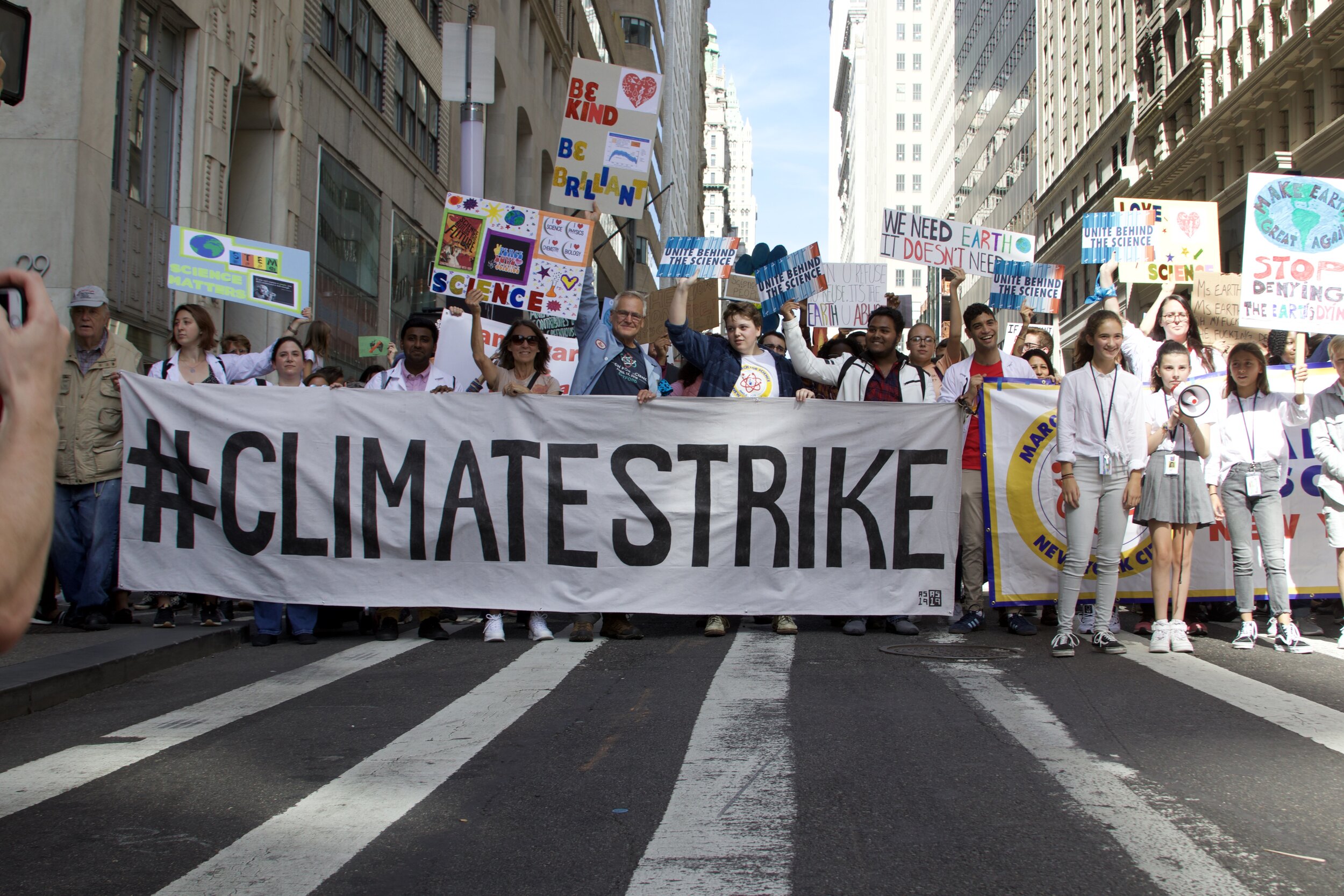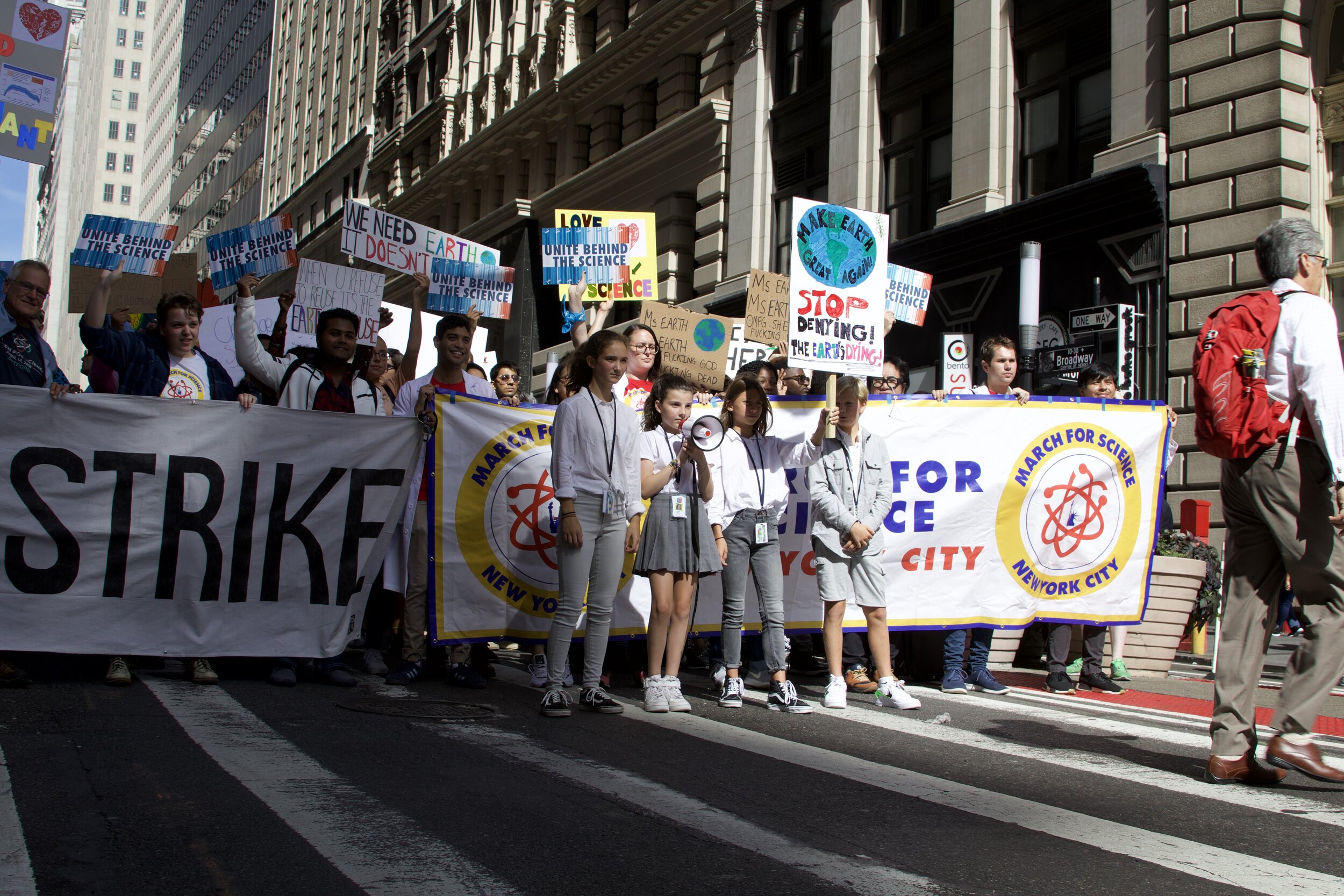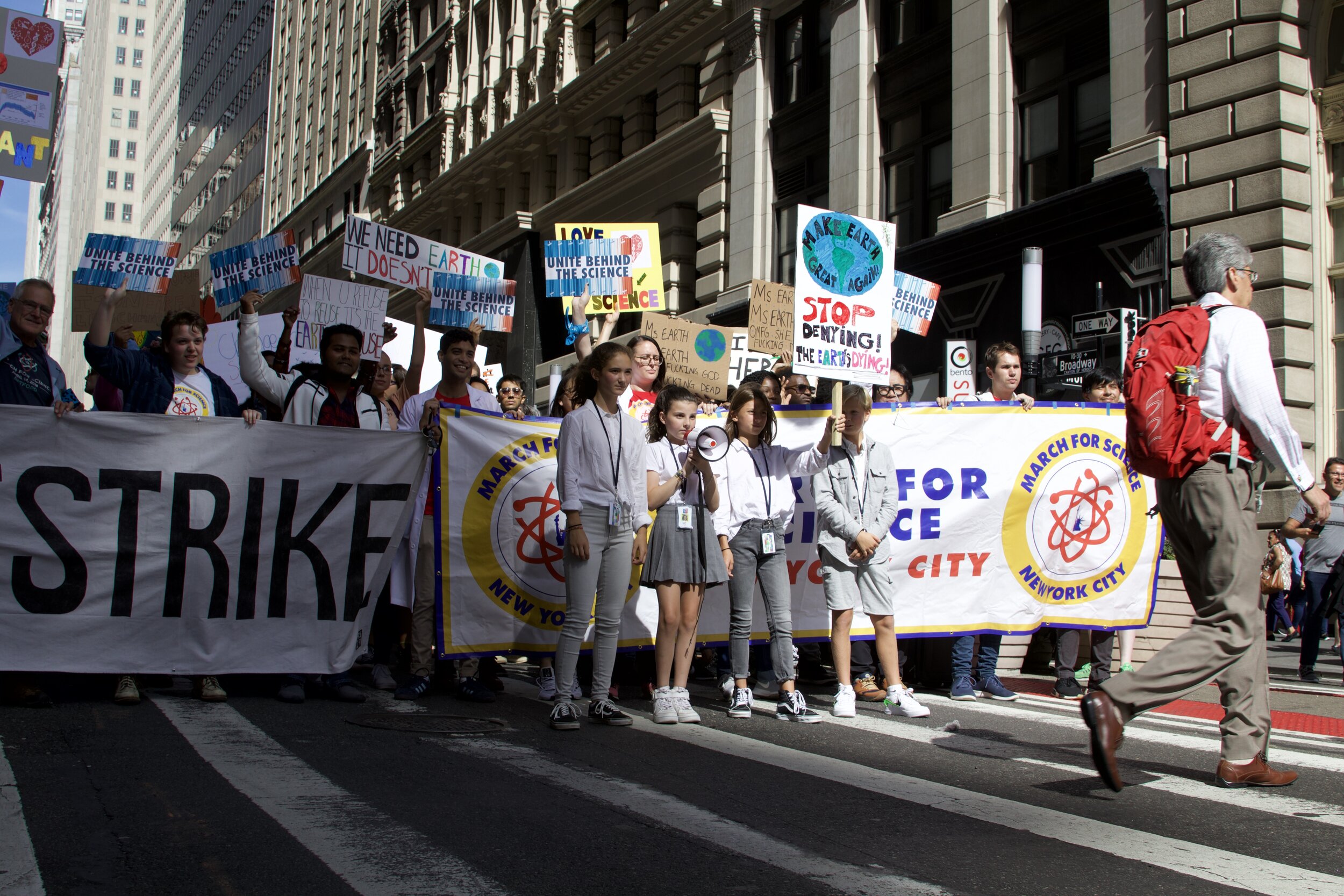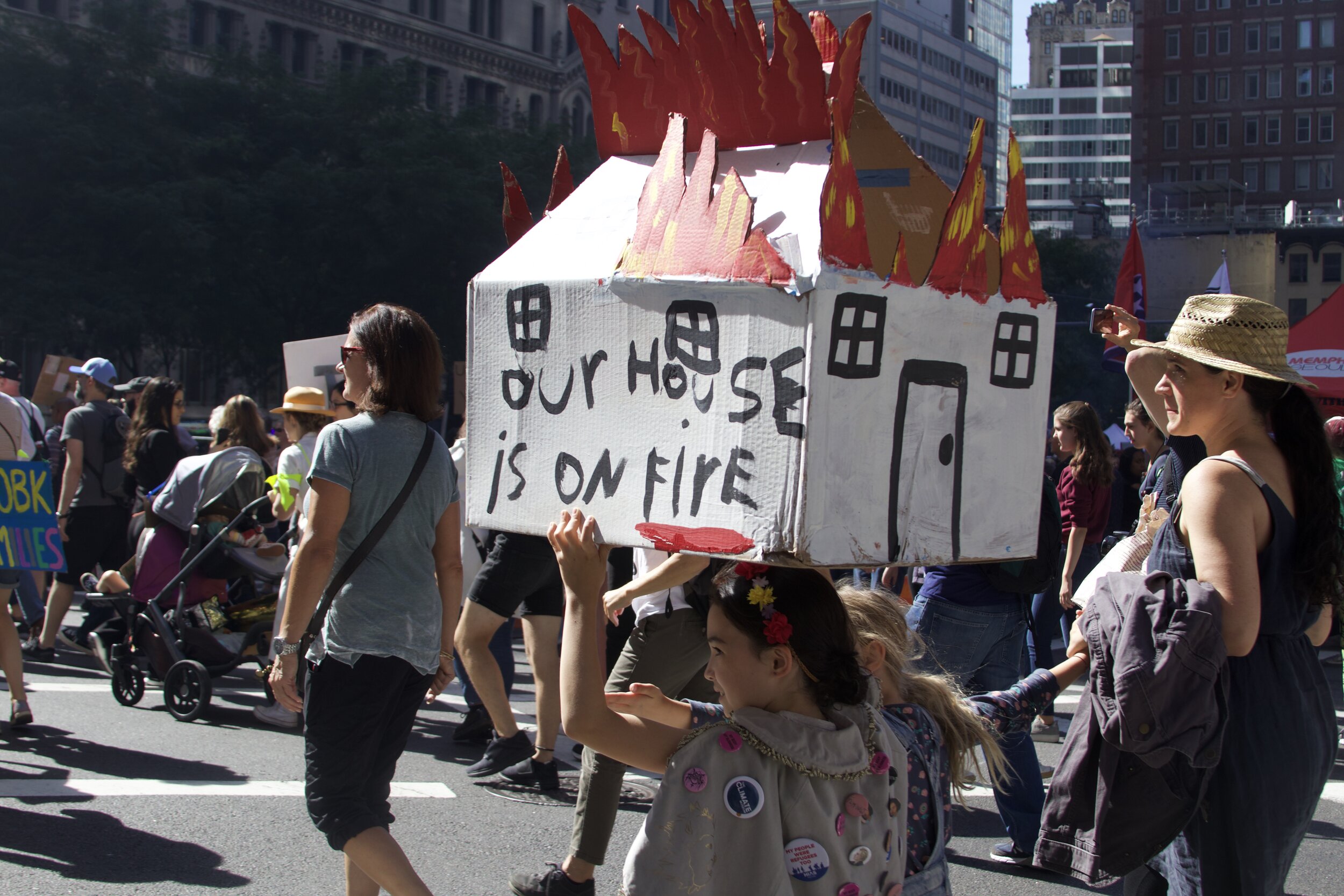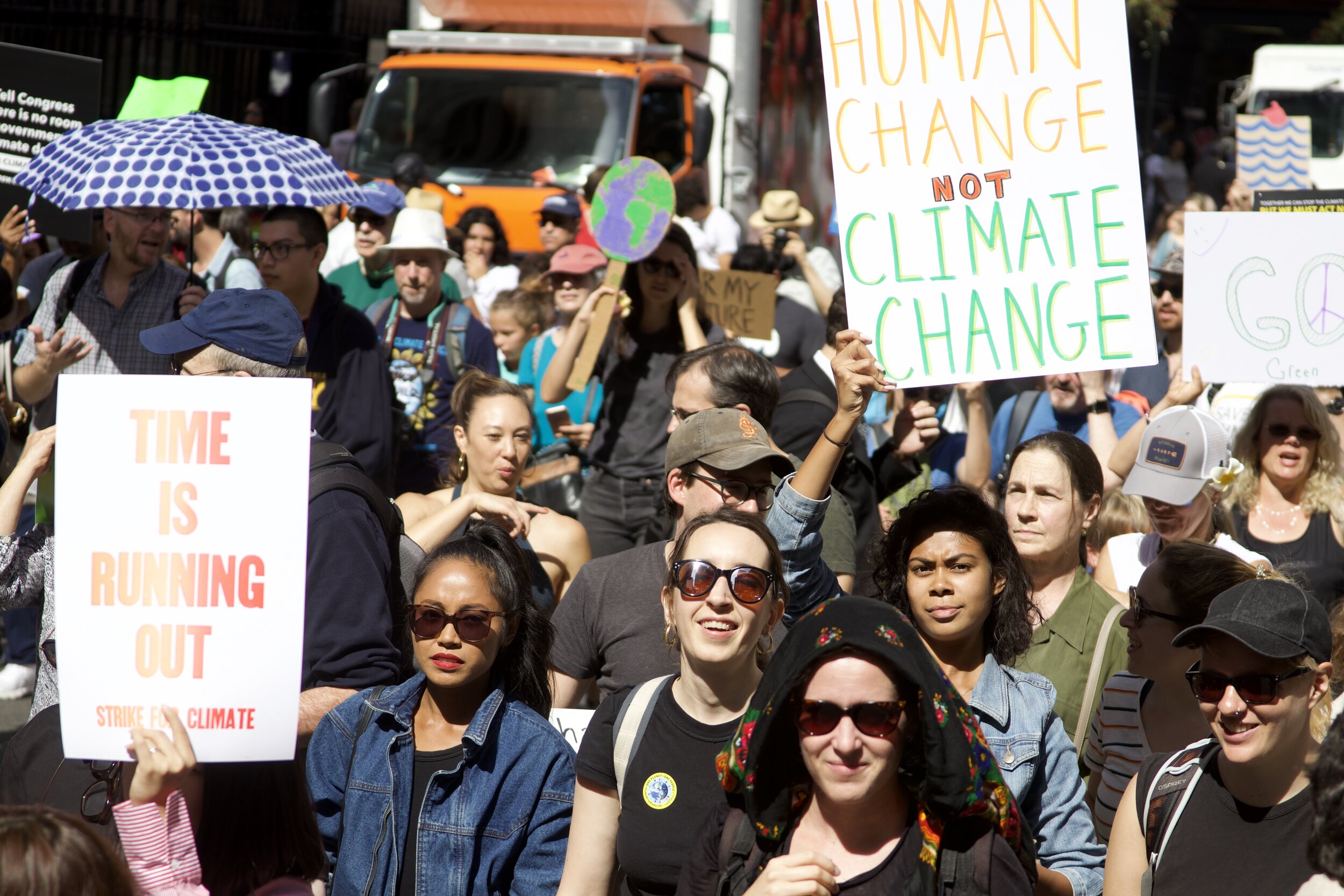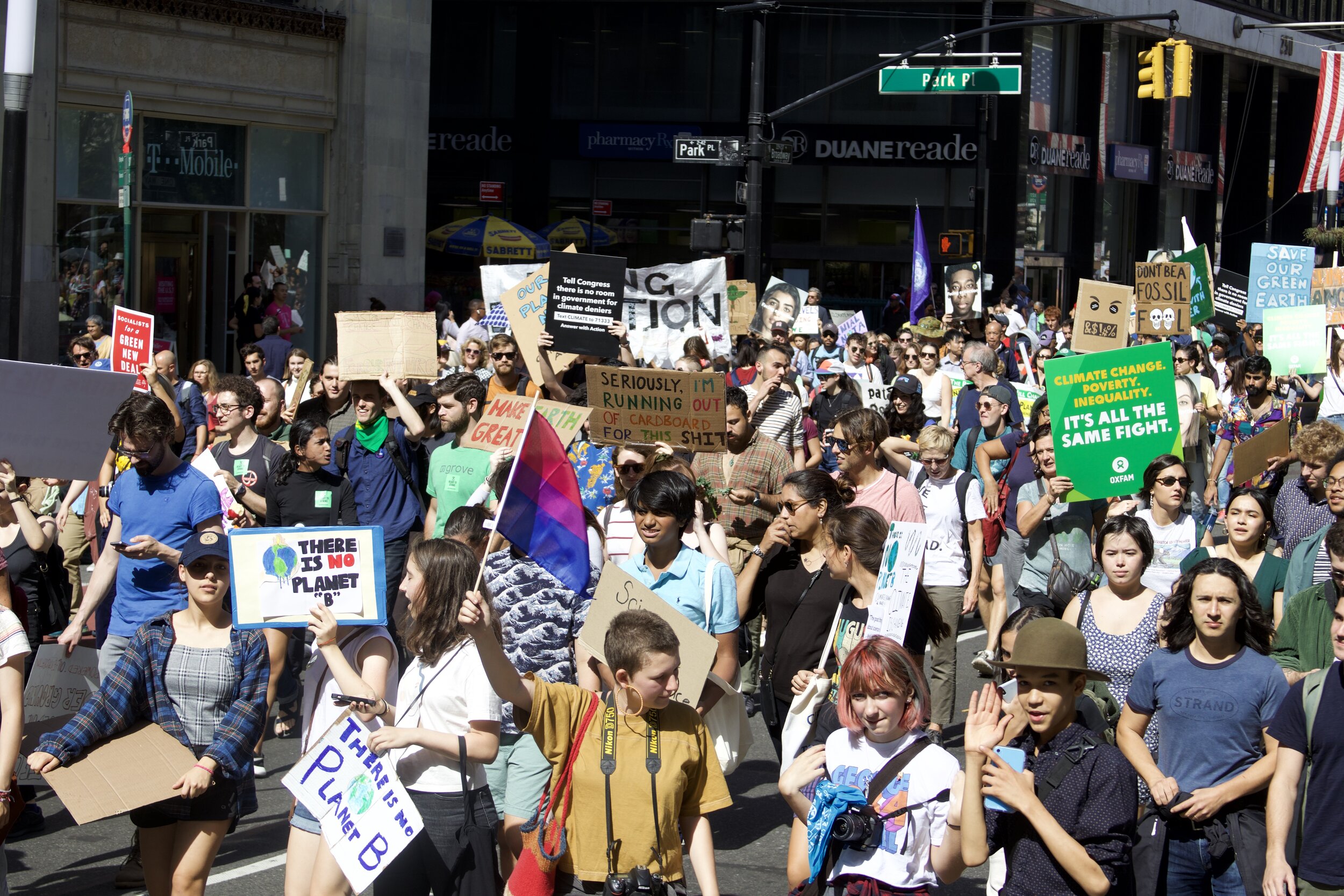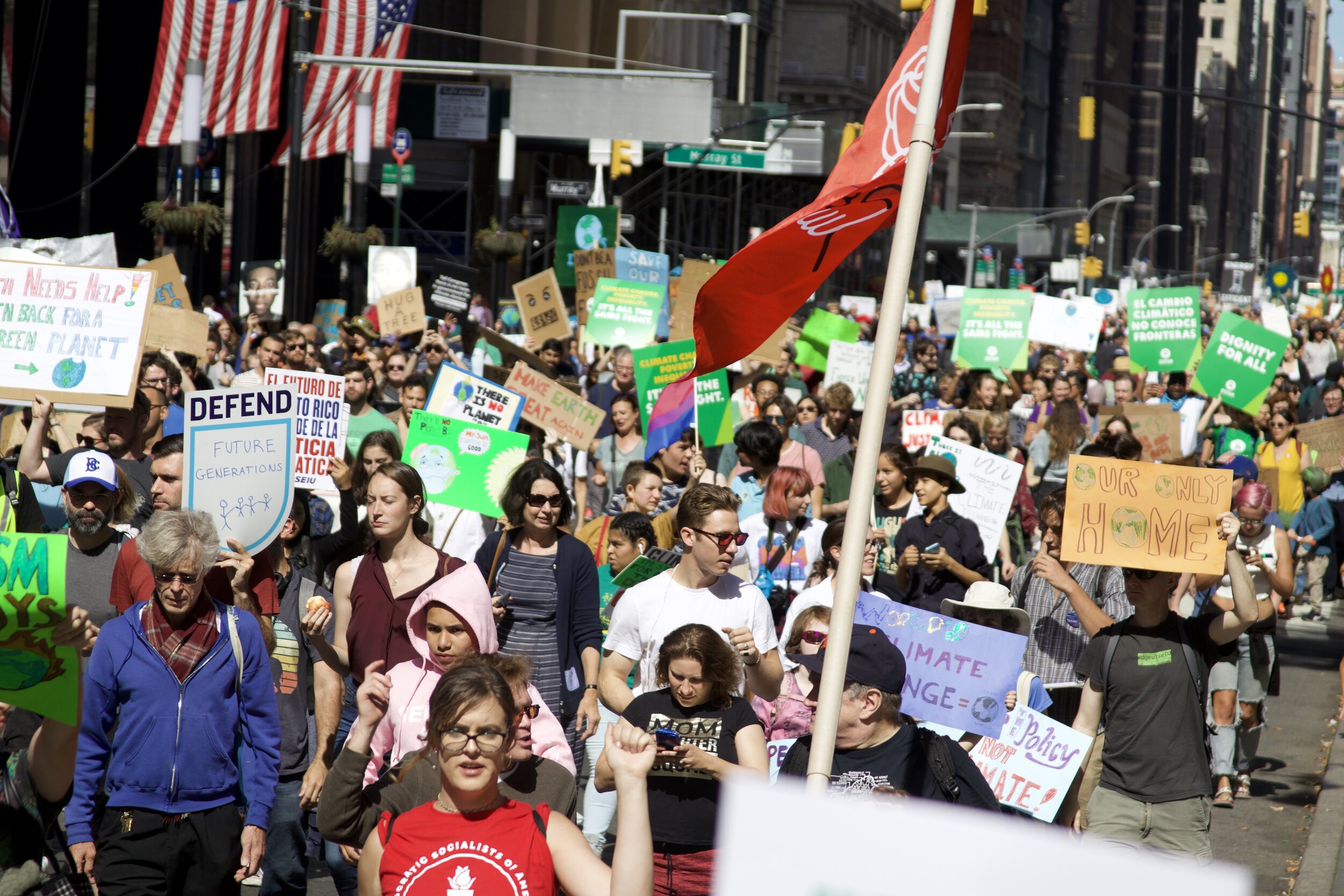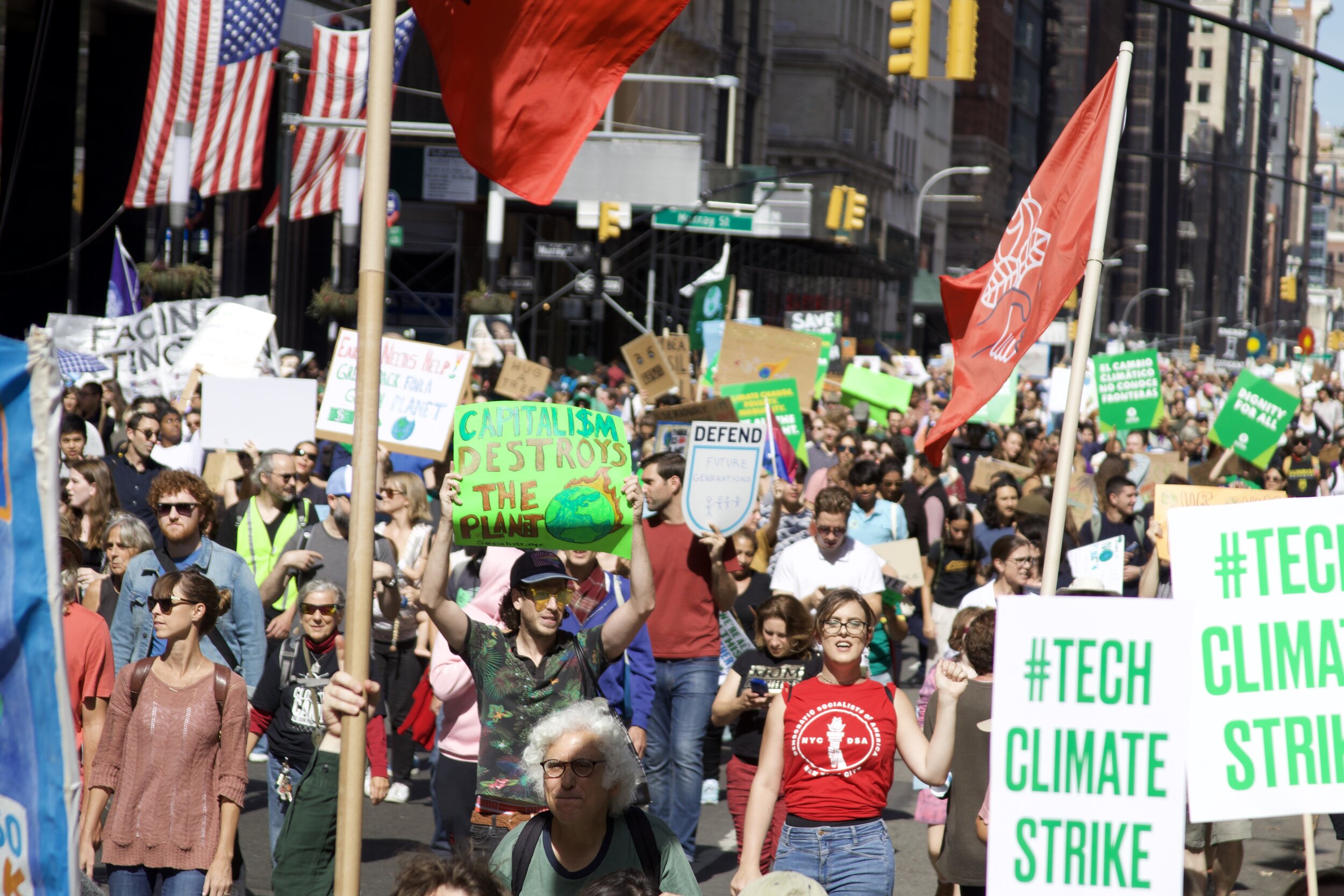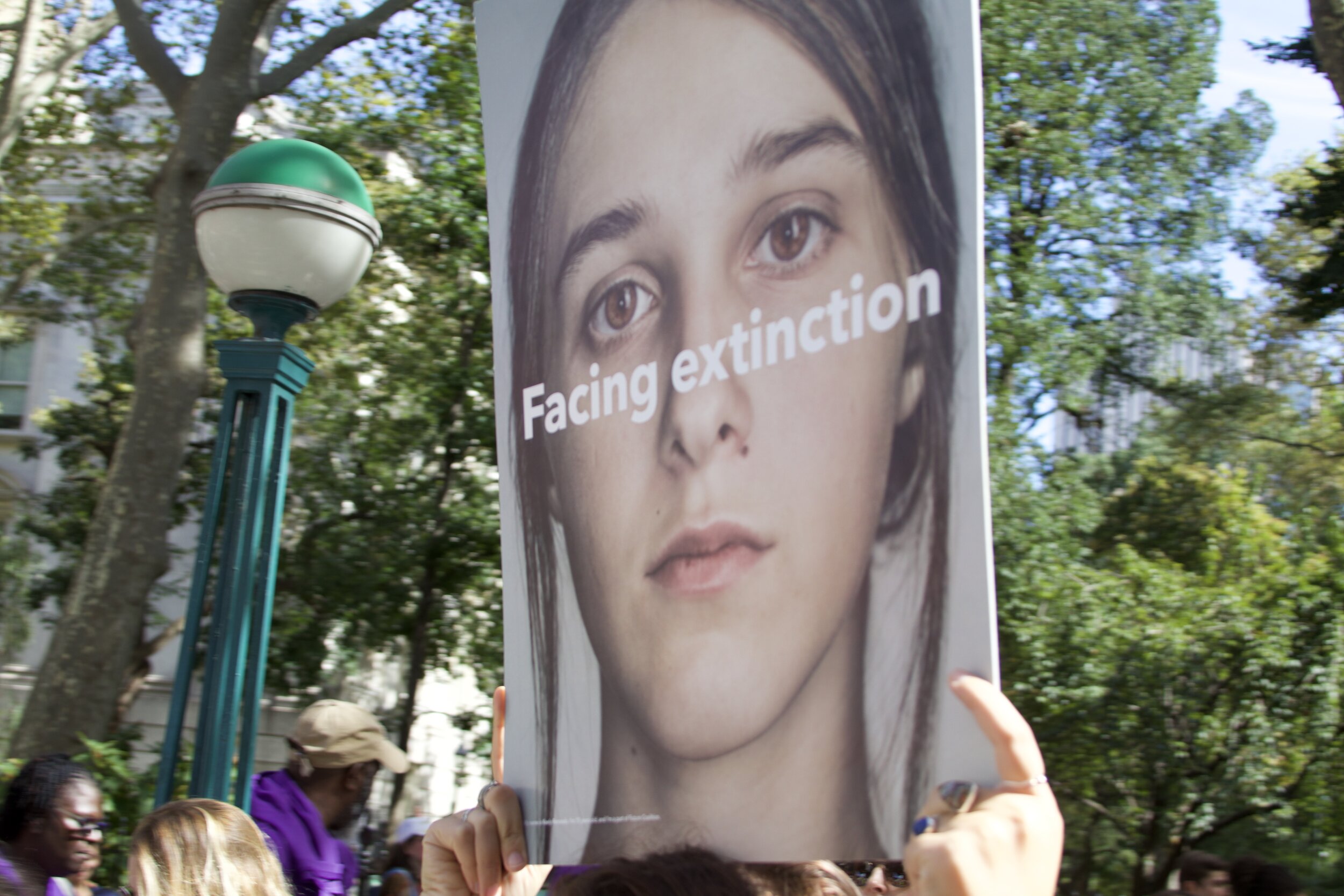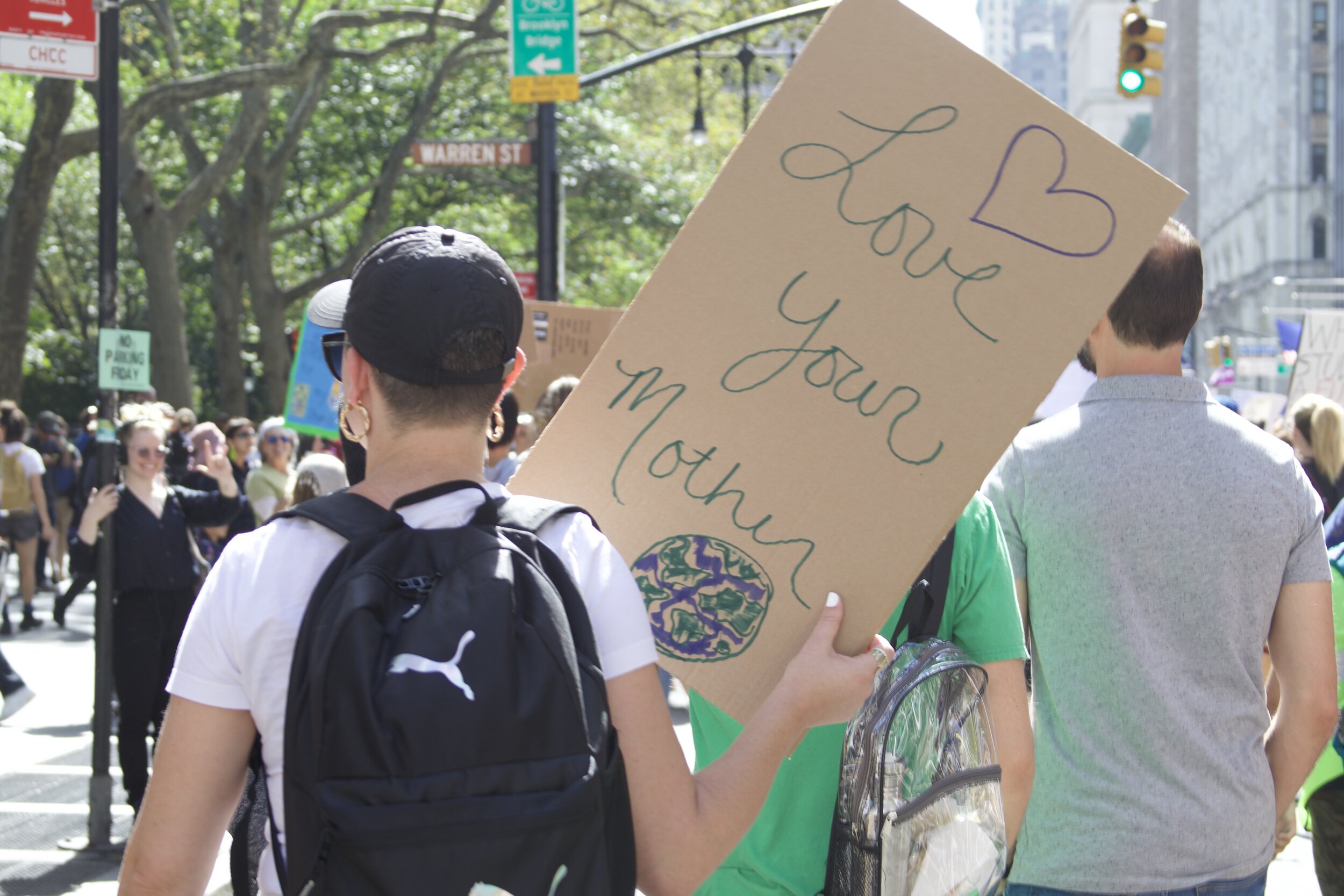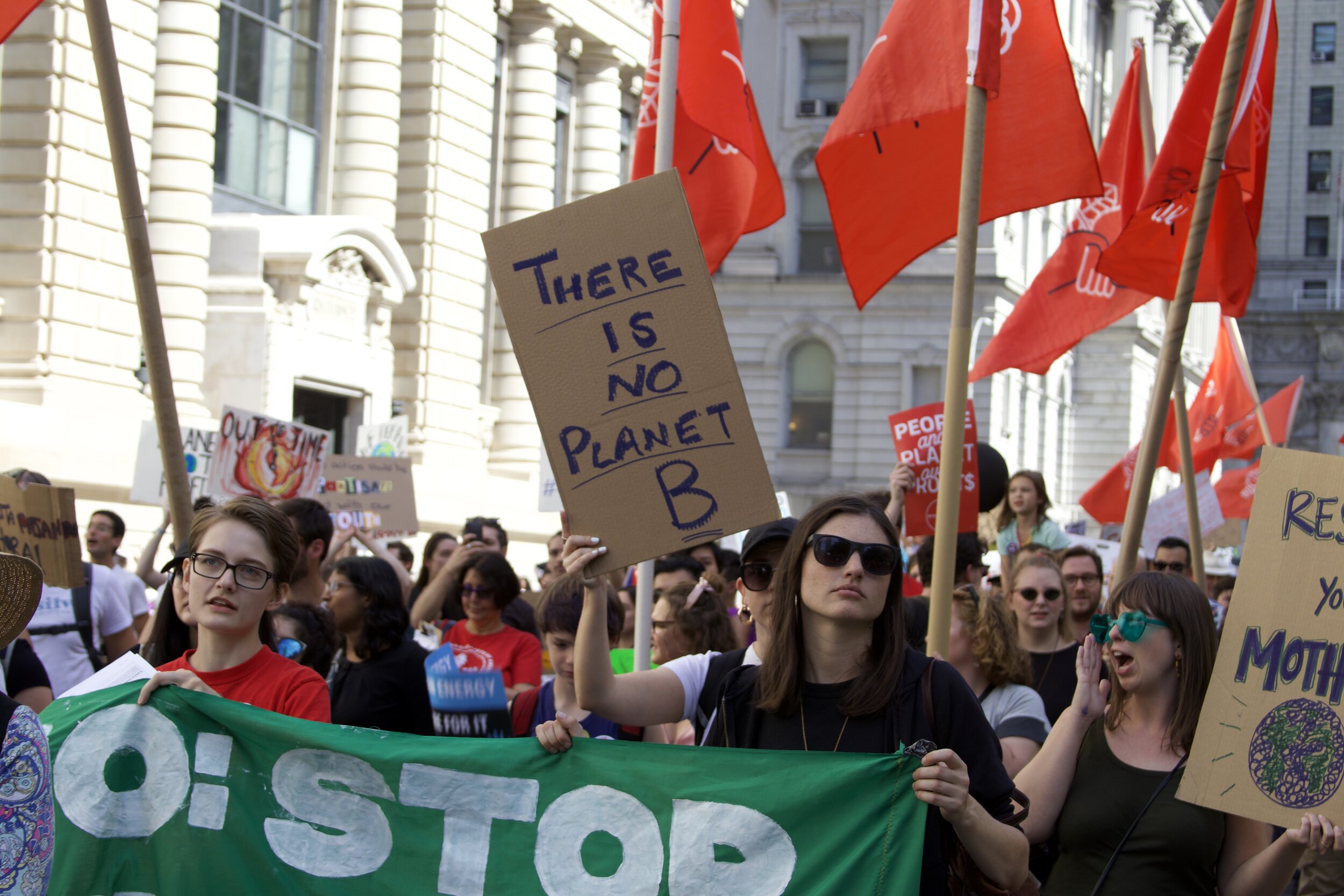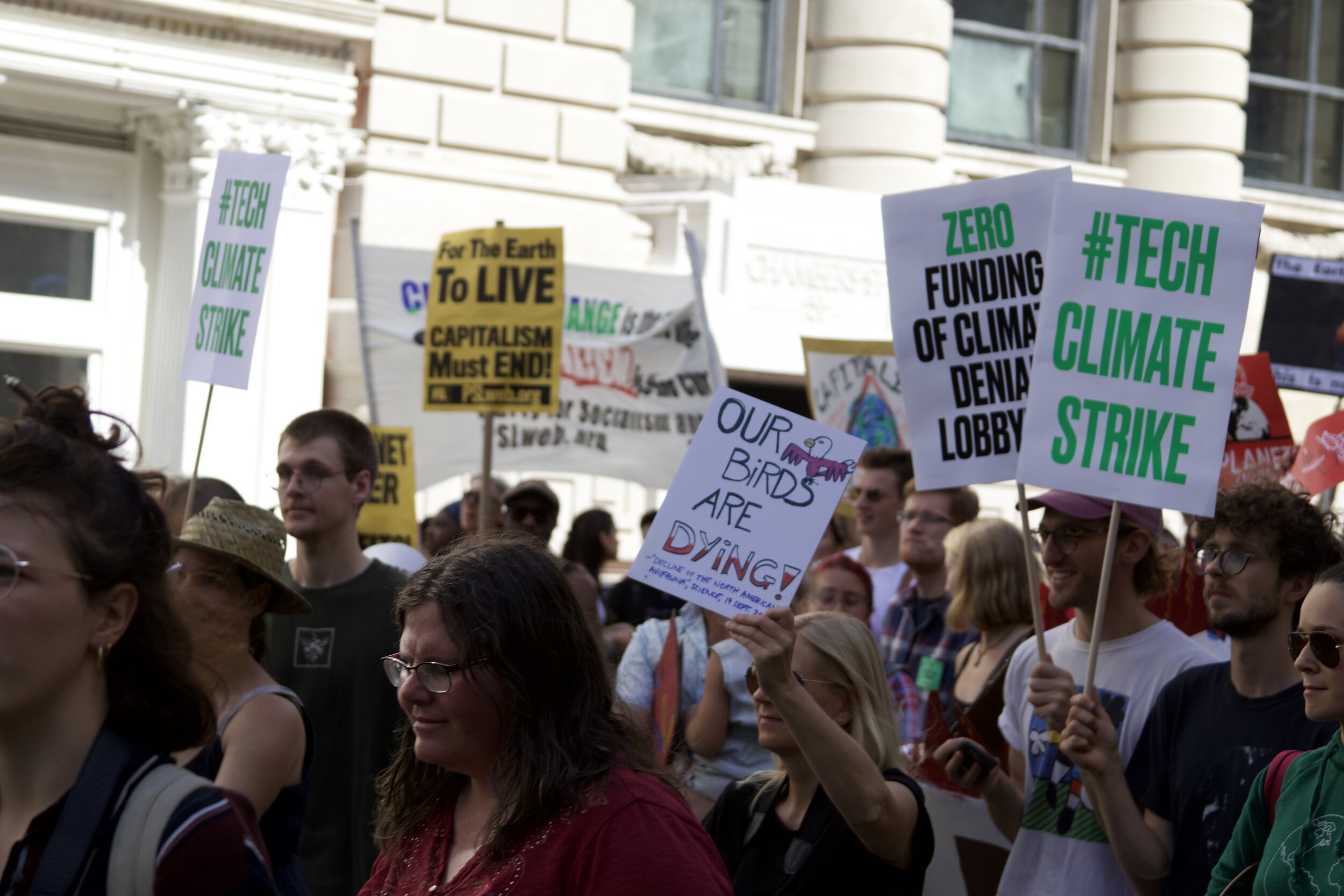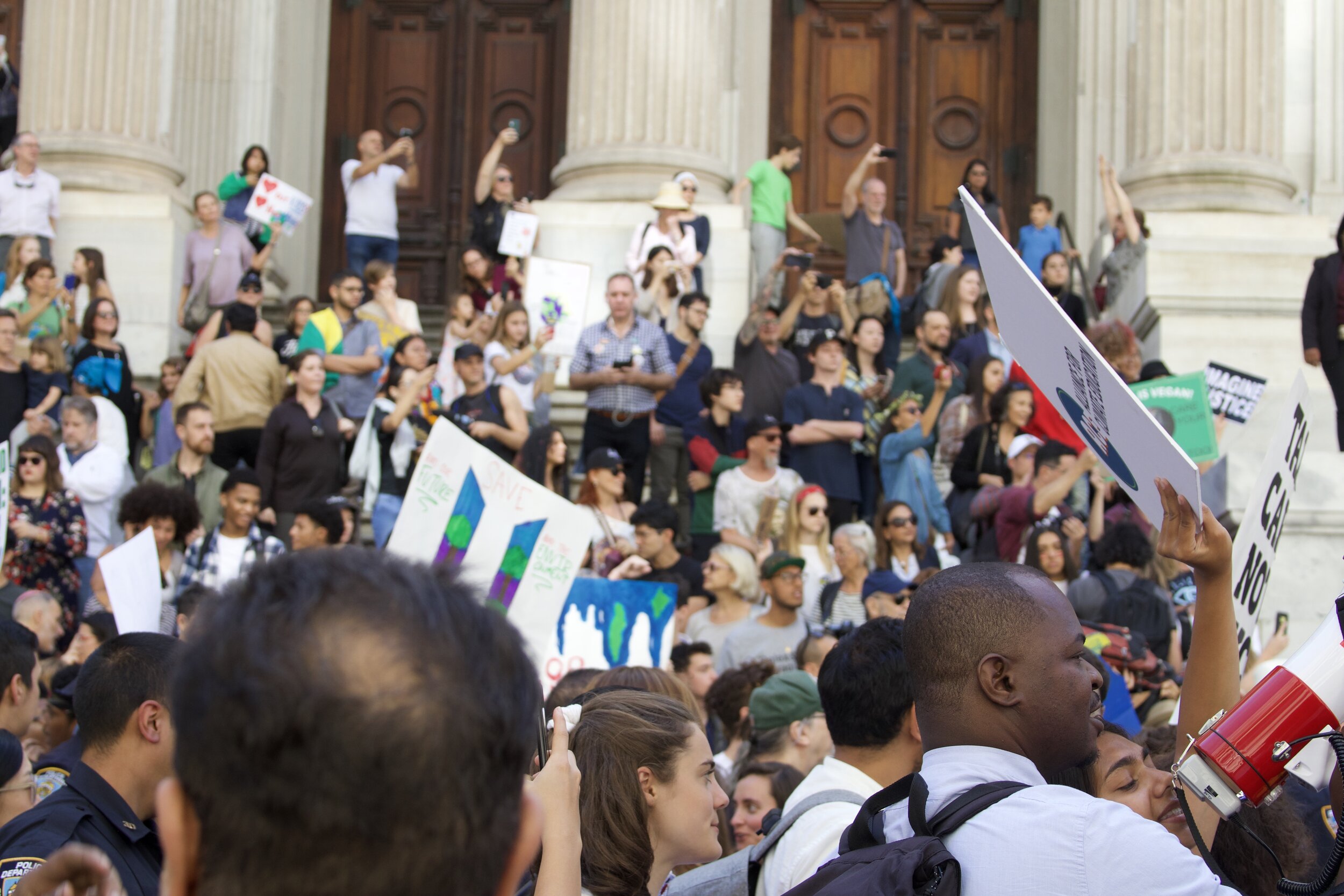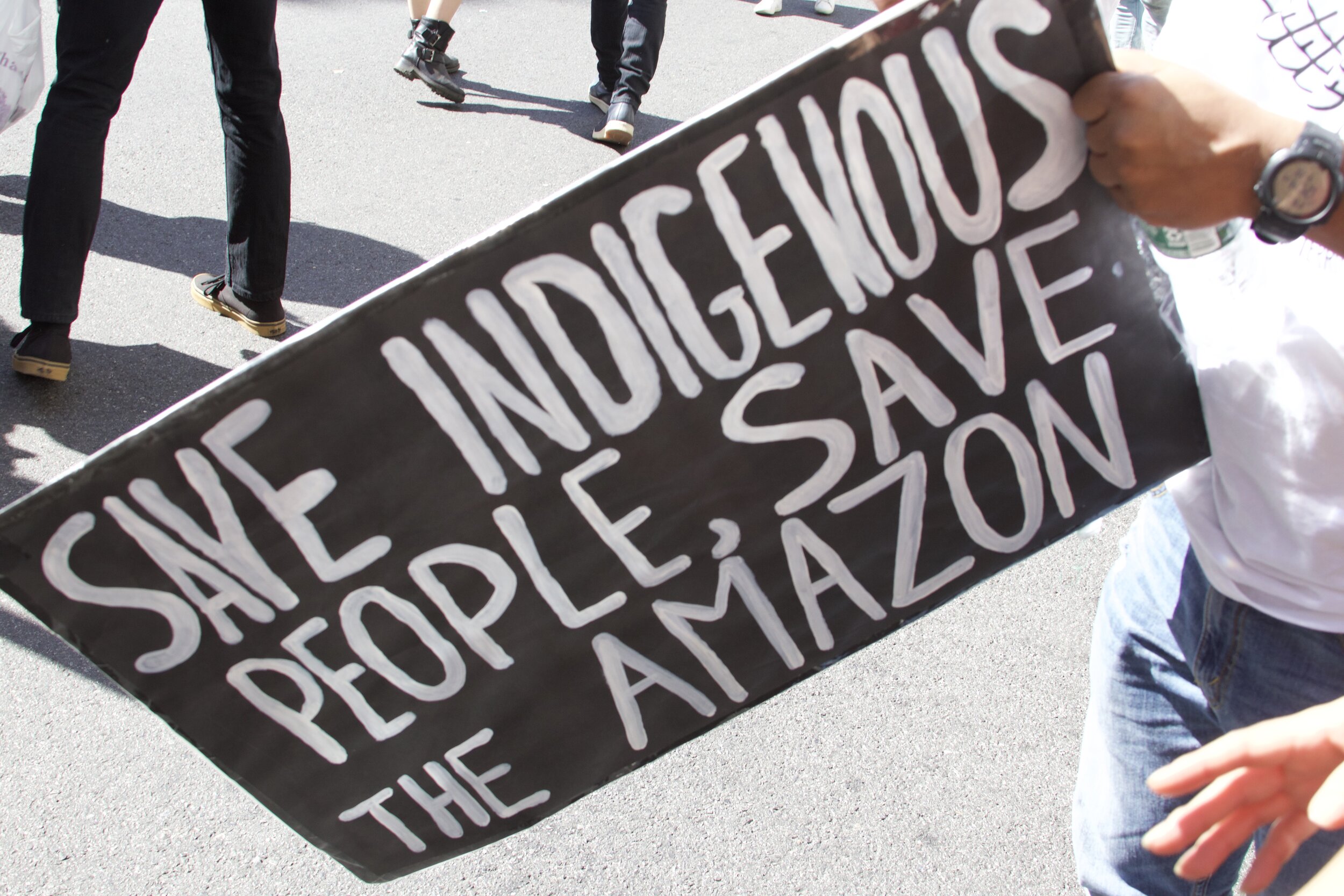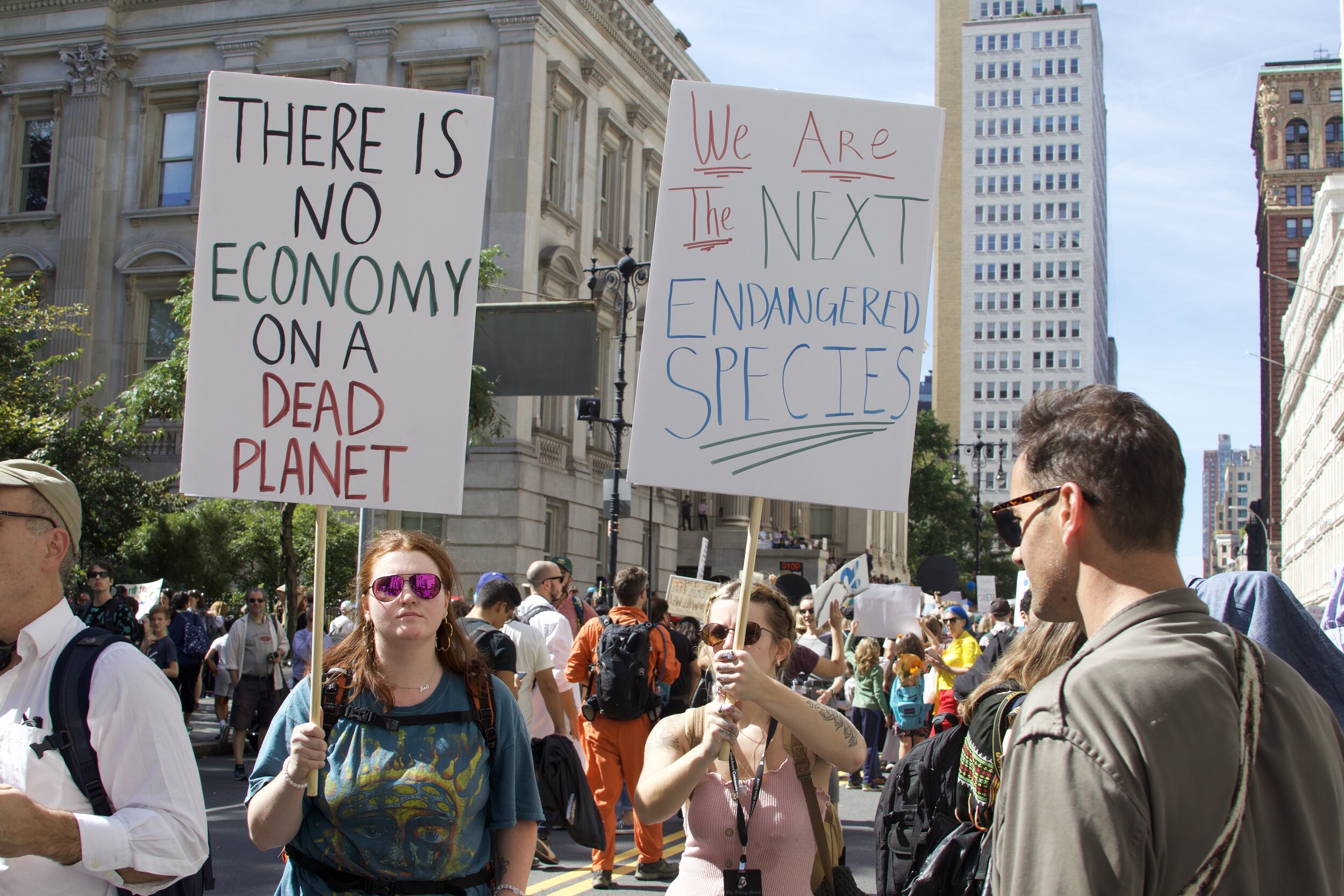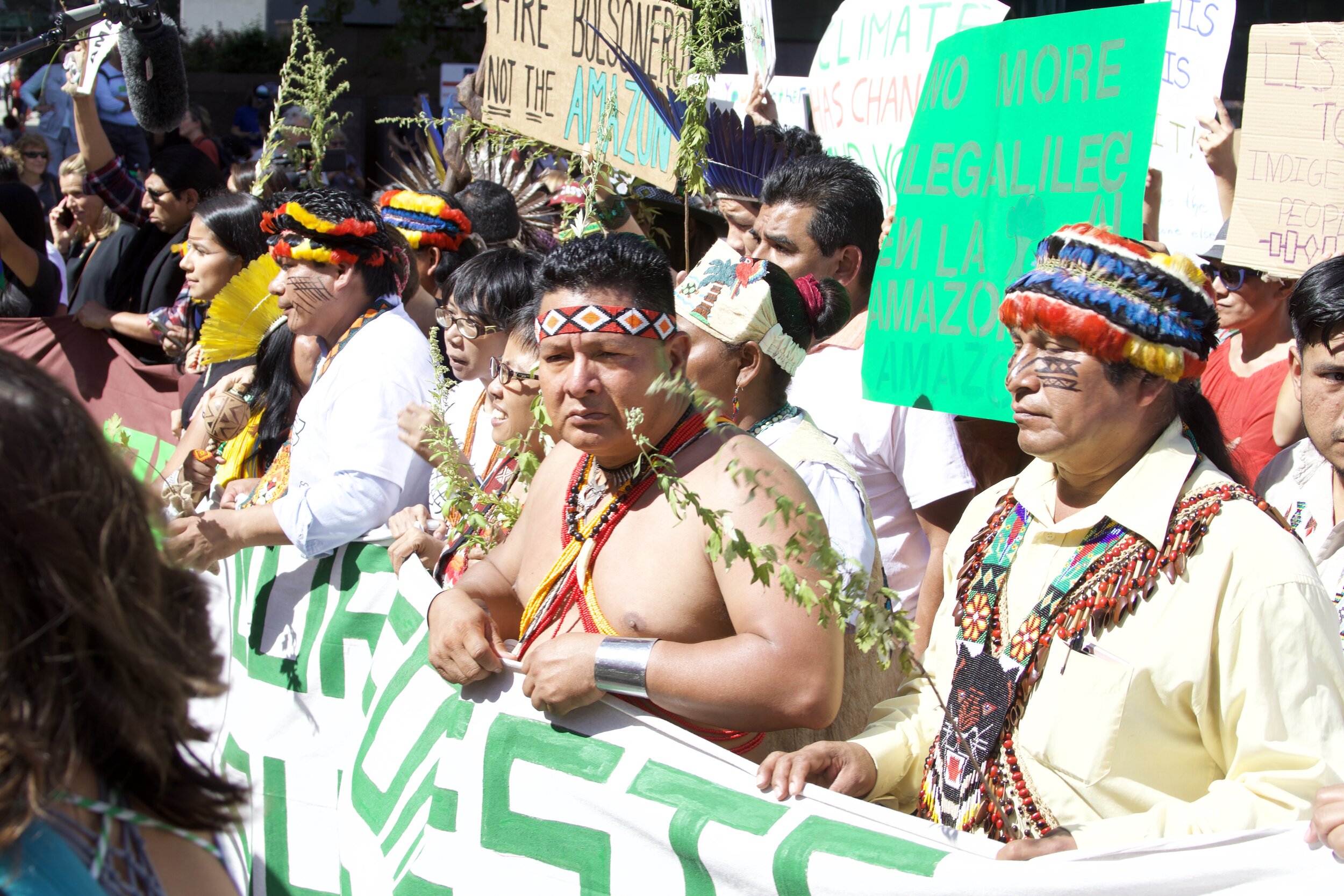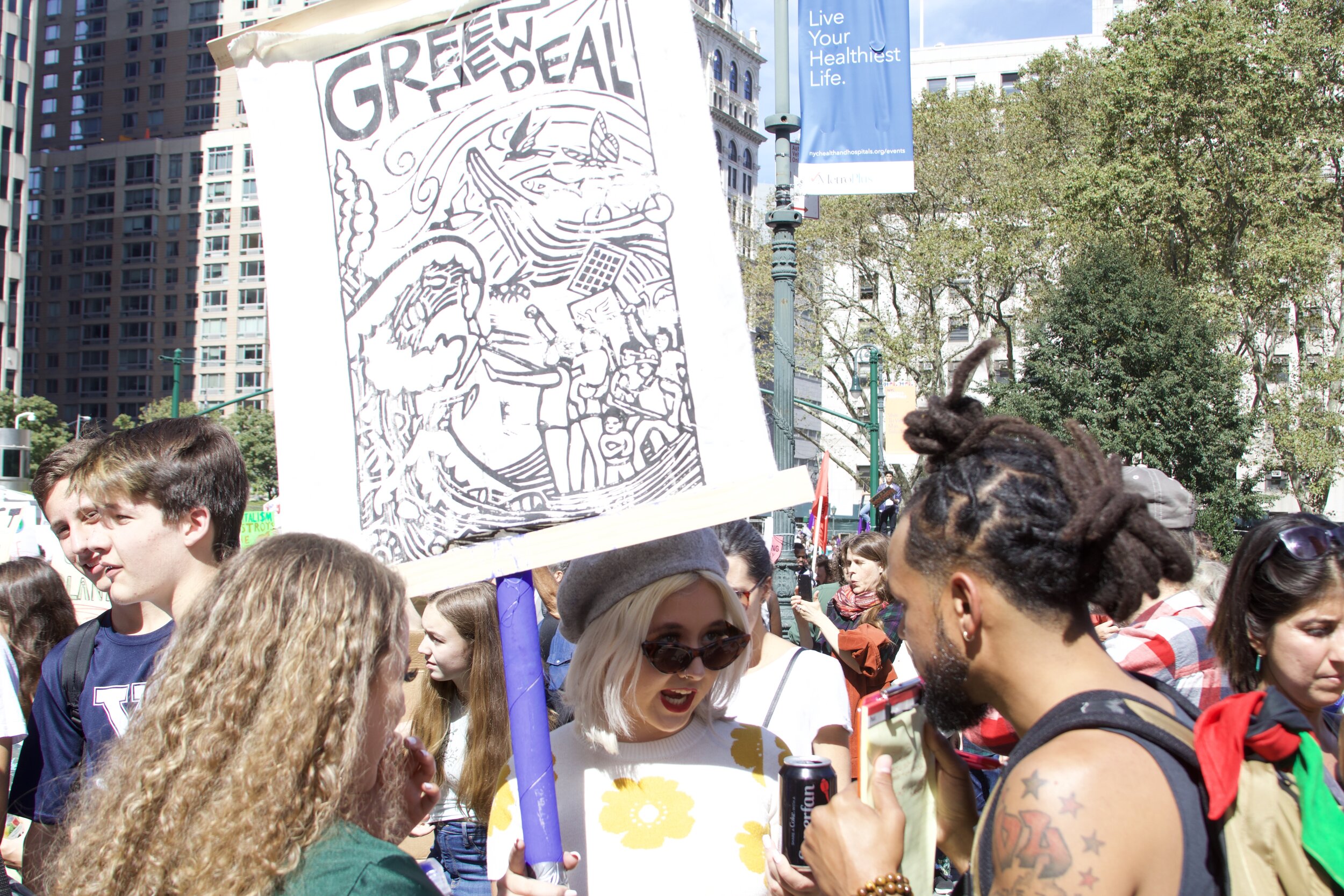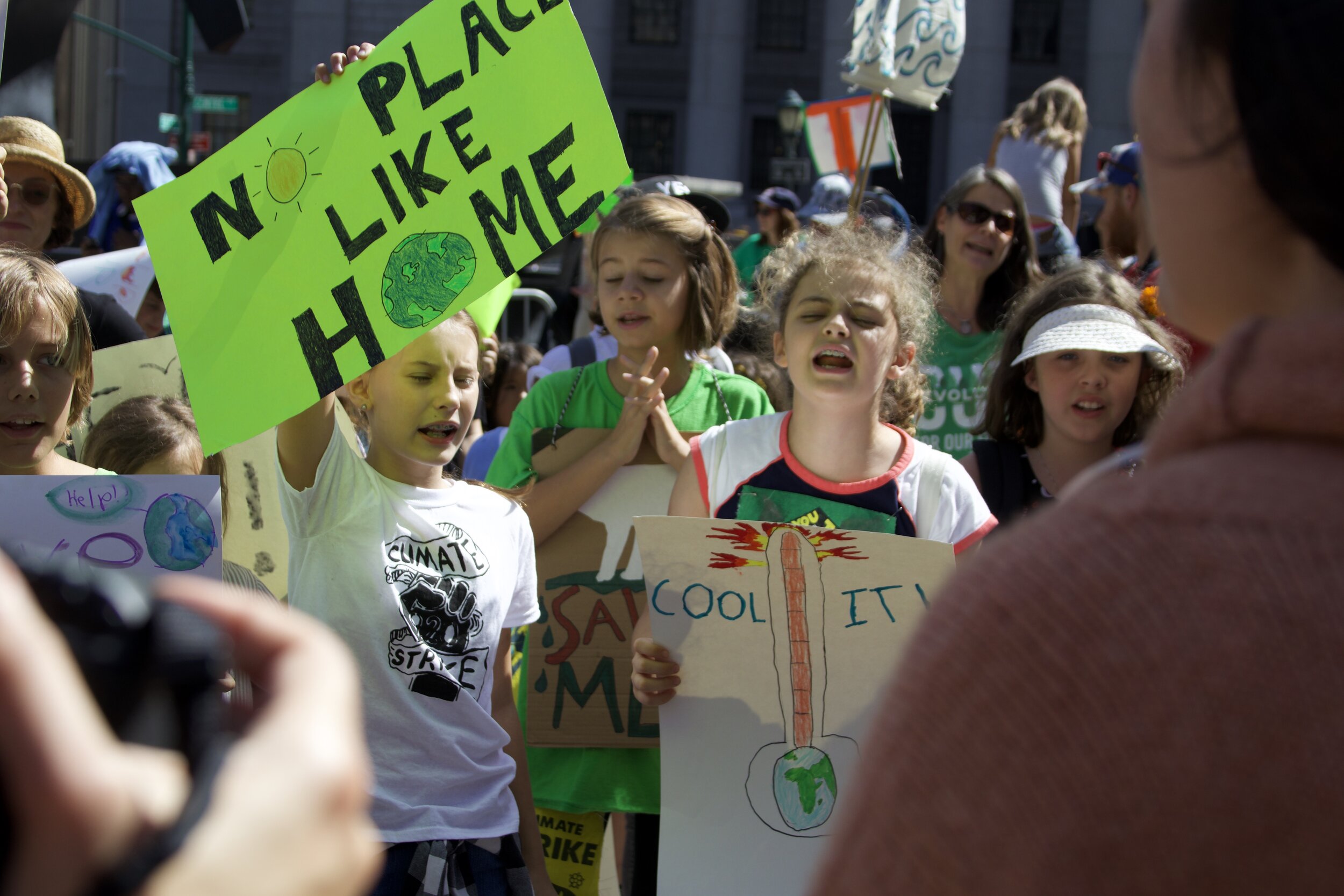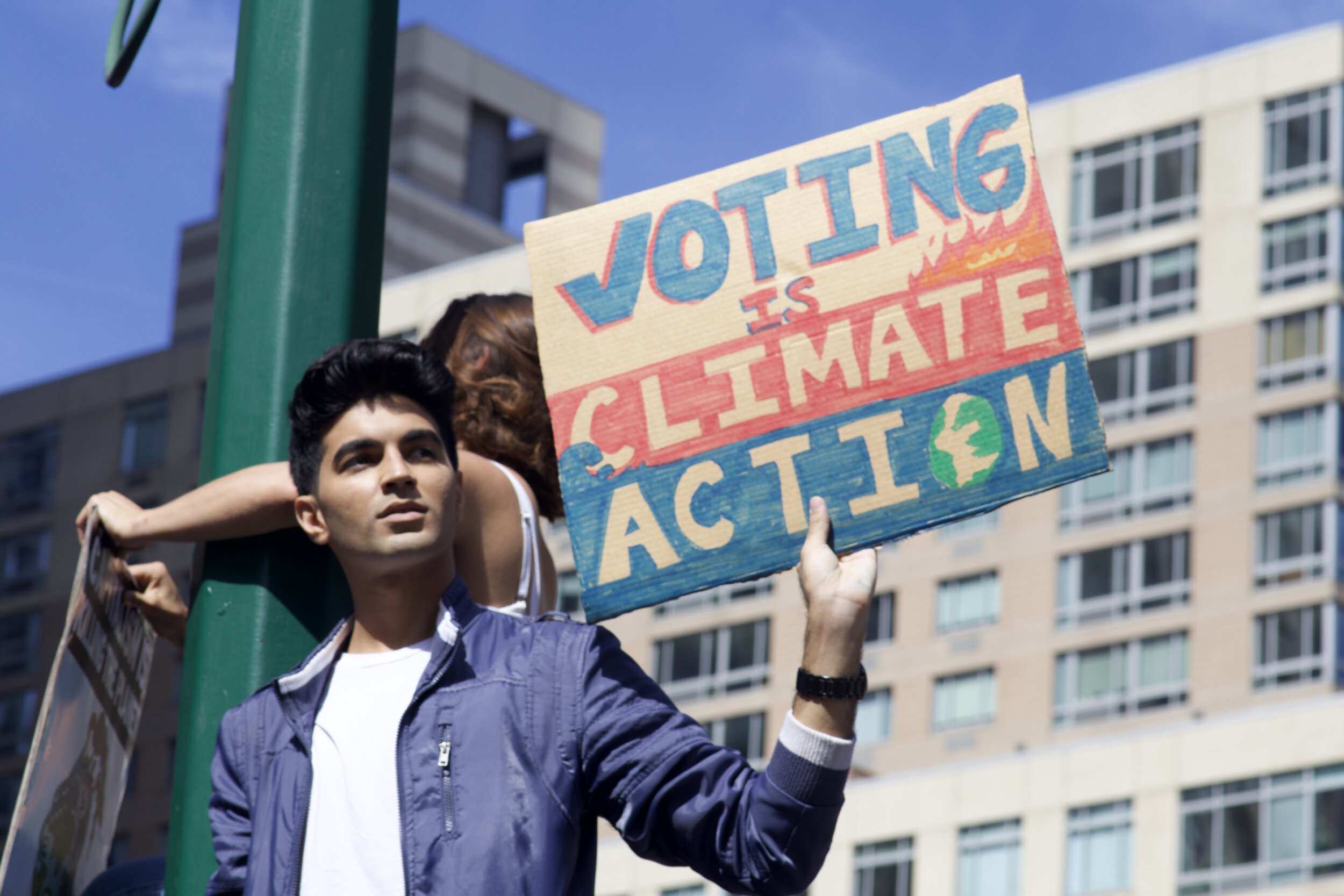See You in The Streets: Citizens Around the World Gather for The Climate Strike 2019
Words by Ja'sean Sanderson
Illustrations by Aspasia Celia Tsampas
Photos by Hector Santiago
Staff writer Ja'sean Sanderson and photographer Hector Santiago represented The Campus at the New York City Climate Strike that took place on Friday, September 2o, 2019. Below is Sanderson's recount of the powerful event and a series of equally empowering photographs by Santiago.
On September 21st through the 23rd, New York City hosted the UN Climate Action Summit 2019. As a demand for action, citizens around the world gathered on Friday, September 20, 2019 to rally for action in what became known as the Climate Strike 2019, the largest protest for climate change the world has ever seen. According to the United Nations website, “global emissions are reaching record levels and show no sign of peaking. The last four years were the four hottest on record.” UN Secretary-General António Guterres’ plan is to implement “concrete, realistic plans to enhance their nationally determined contributions by 2020, in line with reducing greenhouse gas emissions by 45 percent over the next decade, and to net zero emissions by 2050”.
Over 50,000 people from all over the world marched through the streets of downtown New York City to make their presence felt. Climate Strike 2019 was a sight to behold. The Climate Strikers marched from Foley Square to Battery Park. This demonstration was deemed to be the biggest protest on climate change to date, and the people came out in droves, representing all ages, ethnicities, and countries. People from states like Louisiana and nations like the UK traveled to New York City all to participate in this march.
With a large number of individuals on the streets protesting, is marching the best utilization of this collective energy? How effective is the Climate Strike 2019?
So, what did the protestors feel would be accomplished by marching? The responses ranged from the quintessential goal of “raising awareness,” to the more philosophical responses. Tamara, representing 350, an international environmental organization addressing the climate crisis and named for what is considered the target CO2 parts per million (ppm), informed The Campus that our Earth is currently at 415 ppm and that this generation began with 350 ppm, a rather large and frightening increase. Tamara says the strike promotes “a DIY (do it yourself) approach.” Majority of the protestors believed the strike was setting an example for children and future generations. It teaches the younger generations to not simply accept agendas from the powers that be, and that society is conceptualized from the bottom up.

Adam Dore-Young, a resident of New York City, declared that the strike is only “the first step. Now, we must organize and do practical work.” The Sustainable Institute proposed that “the best thing we can do is go vegan. Animal agriculture is the greatest cause of planetary and atmospheric destruction.”
There was a bevy of different avenues expressed with the intention of reaching the same end. A more refined political approach may be advantageous. The Climate Strikers should leverage their power against their elected officials, informing them that if their stance on climate change isn’t a powerful one, they will not receive political support come next election.
Many felt that the march was substantial enough to leave an impression. The march disrupted traffic flow, demanded allocation of city resources (i.e. police presence), and called the attention of world officials in town for Monday’s UN Climate Action Summit. The Climate Strike 2019 may be just the beginning, and subsequent meaningful action is imperative to ensure human existence on this planet for generations to come.






